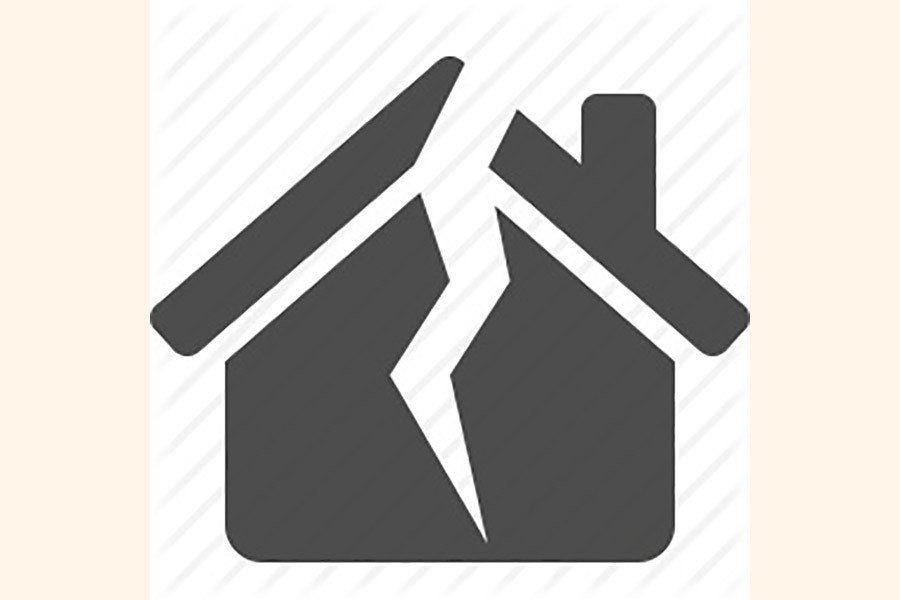The size of the construction industry in Bangladesh is bigger than that of the readymade garment (RMG) sector. Use of cement and steel has recorded a dramatic growth, riding on large infrastructure projects and increasing demand for the materials across the country. The steel sector has marked a 15 per cent growth in 2015 riding on infrastructure projects, including housing and public utilities, and the country is going to continue the growth exceeding 15 per cent in the coming years.
The World Bank's Bangladesh Development Update 2016 says, the construction sub-sector performed better in Fiscal Year (FY) 16, growing at 8.9 per cent compared to 8.6 per cent the previous year. Real estate, renting and business activities have also performed better, expanding by 4.5 per cent in FY16 compared to 4.4 per cent in FY15. Bangladesh has an installed production capacity of 40 million tonnes of cement a year while the utilised production capacity is 32 million tonnes of cement per annum. The country is capable of meeting the local requirements of steel and cement.
But sadly, no attention has yet been given to ensure safe workplaces for workers in the construction sector although entrepreneurs have their own association called the Real Estate and Housing Association of Bangladesh (REHAB) like the Bangladesh Garment Manufacturers and Exporters Association (BGMEA) of garment factory owners. According to Occupational Safety, Health, and Environment (OSHE), 147 construction workers were killed in 2016 due to unsafe workplaces in real estate sector. The Bangladesh Institute of Labour Studies (BILS) reported that there were a total of 1,196 deaths in the construction industry between 2005 and 2016. This resulted in an average of approximately 100 deaths a year.
The two major occupational hazards in construction sector are fall from a height and electrocution. The rate of injury is also high, with BILS reporting approximately 100 injuries in 2016. Construction workers also suffer from various construction-related health hazards including breathing problems, hearing loss and skin diseases.
There are two important laws in Bangladesh regarding construction safety. The first is the Bangladesh Labour Act (BLA), which consolidates all the labour laws in Bangladesh, and gives guidelines to safe work environment and worker compensation in case of injury or death. The Department of Inspection for Factories and Establishments (DIFE) is entrusted with the responsibility of implementation of the BLA. The second is the Bangladesh National Building Code (BNBC), which establishes the minimum standards for design and construction for all buildings in Bangladesh, and has provisions on safe construction practices and labour welfare.
As experts say, despite such laws existing in Bangladesh, monitoring and enforcing safety in construction is still a big challenge due to various limitations such as confusion regarding enforcement authority, shortage of manpower at enforcing agencies, and lack of a national safety certification and licensing programme for engineers, contractors and workers. The constant cycling of workers on construction sites adds another layer of difficulty in implementing construction safety. In the absence of a national monitoring system, the responsibility of providing safety generally falls on the building owners, private developers or contractors, who often do not take adequate action due to the cost and organisational hassles involved with implementation of the required safety system.
Finally, even if companies do enforce safety rules, the lack of safety awareness among workers and in society in general, creates a significant barrier to implementing safety on sites.
According to Dr AFM Saiful Amin of the Civil Engineering Department, the BUET, for a building, two things need to be considered--safety during use and safety during construction. While a lot of emphasis is given on the safety of a building during its use, less time is spent on safety during construction, which includes safety of the construction employees as well as safety of the surrounding neighbourhood. Due to several limitations, legal measures are hardly taken against safety violations. Many deaths during construction also go unreported.
Safety should be included as part of the branding of a company. The safety record of airlines is publicly available. Similarly, construction companies should be forced to make their safety records public so that consumers can identify the safest construction companies. The cost of ensuring safety is not very high. So, rather than the cost, what is really lacking in our society is awareness. "One of the ways to increase awareness is by emphasising construction safety in our engineering education. As such, this point must be raised in academic forums, " Dr Amin says.
Mikail Shipar, former Secretary, Labour Ministry, who was involved with labour welfare intensively, says, since the Labour Act only covers the formal sector, it does not fully include the safety of construction workers. However, there is scope of providing legal support to the construction workers since they work under formal organisations.
The DIFE has its hands full with the garment sector, but it should look towards the construction industry as well. In the garment sector, due to the pressure from international buyers, the company owners are now abiding by the same safety rules, which the ministry could not make them follow for years. Similar type of pressure is needed in the construction sector from the consumers. However, in the end, the main responsibility for ensuring safety of workers lies on an owner.


